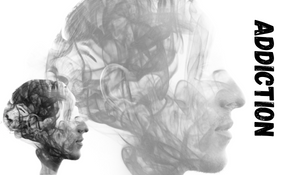Since the 1900s, U.S. public schools have employed a growing number of school resource officers (SROs) – sworn law enforcement officials. In 1975, only 1% of schools reported having police officers on site, but by 2018, approximately 58% of schools had at least one sworn law enforcement official present during the school week. Since 1998, the federal government has invested over $1 billion to explicitly increase police presence in schools, and over $14 billion to advance community policing, which can include SROs.
Topics: education, criminal justice, social issues
Re-entry programs play an important role in "leveling the playing field" for some of society's most vulnerable members. The goal is to simplify this complex issue while emphasizing the importance of re-entry programs. These programs are critical in assisting our justice system in achieving its goal of increased public security while also assisting former inmates in becoming productive and successful members of society.
Topics: criminal justice, Adult Re-Entry
4 Elements of Successful Re-entry Programs for Inmates
As you proceed to discuss the major elements of effective inmate re-entry as part of the greater transitional justice system, it is necessary to recognize why society must conceive and respect inmates as Individuals, not simply prisoners.
Society and social services must begin to treat inmates as individuals from the outset of their sentence... Beginning Early!
Topics: criminal justice, social justice, Adult Re-Entry
The American Society of Addiction Medicine recognizes addiction as “a treatable, chronic medical disease involving complex interactions among brain circuits, genetics, the environment, and an individual’s life experiences. People with addiction use substances or engage in behaviors that become compulsive and often continue despite harmful consequences.”
Topics: mental health, criminal justice, social justice
When prisoners in the United States are released, they face an environment that is challenging and actively deters them from becoming productive members of society. Within three years of release, 67.8 percent of ex-offenders are rearrested, and, within five years, 76.6 percent are rearrested.
Criminals are Criminals
Recidivism rates (or rates of repeat offending) are often used as a measure of effectiveness of prison systems and post-release offender management programs. What’s more, studies show that the general public believes - “once a criminal, always a criminal”. They see “ex-cons” as “criminals waiting to happen again.”
Topics: criminal justice, social justice, Adult Re-Entry
How did the United States, with 5% of the global population but 25% of its prisoners, become home to the largest prison system in the history of the world? Some say it’s an accomplishment. The U.S. is a law and order country and our criminal justice system is the envy of the world. Others feel quite differently and suggest that the “war on drugs” led to the mass incarceration of two generations of the urban poor.
Topics: Government, criminal justice, social justice, Adult Re-Entry

In September 2017, we told the story of Agnes Gund, the banking heiress who sold a Roy Lichtenstein masterpiece for $165 million and donated the proceeds to the Art for Justice Fund she founded. The purpose was to “do something about” the mass incarceration of minor drug offenders that filled American jails with 2.3 million people and distinguished the U.S. as the jailor of more of its citizens than any other country on earth.
Topics: Juvenile Justice, criminal justice






